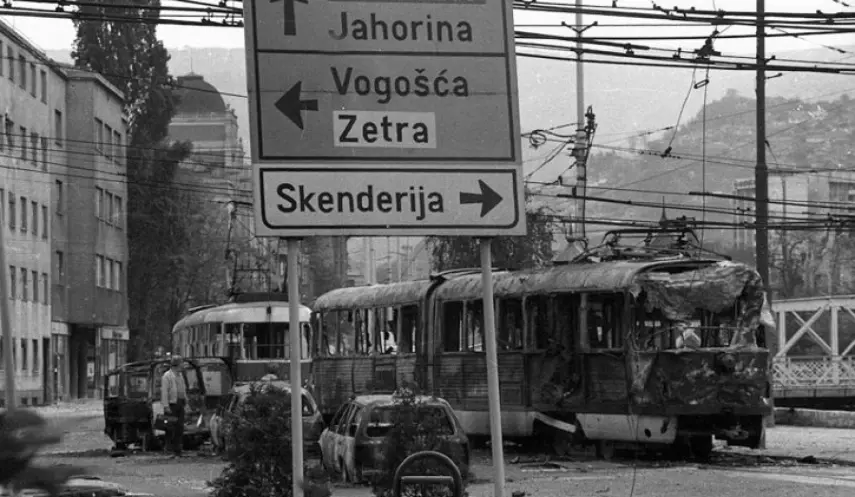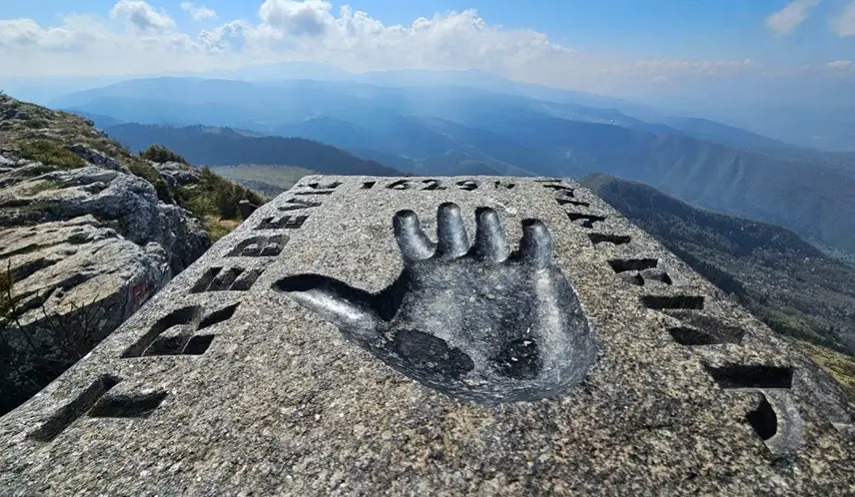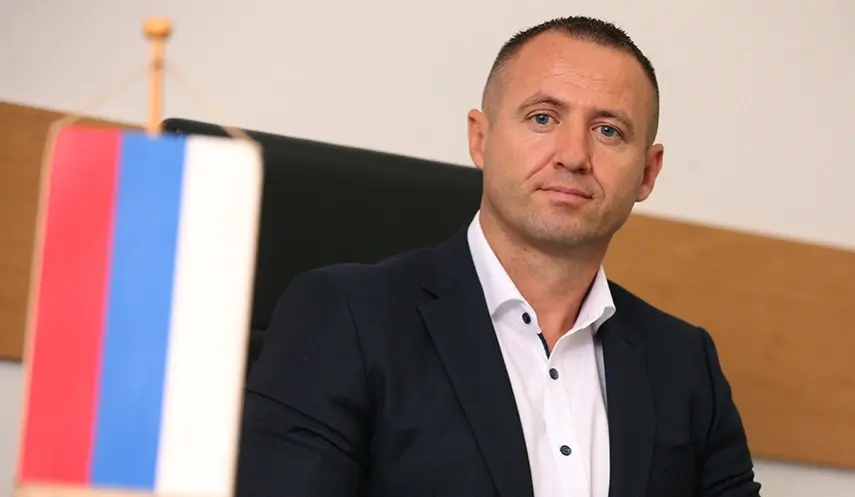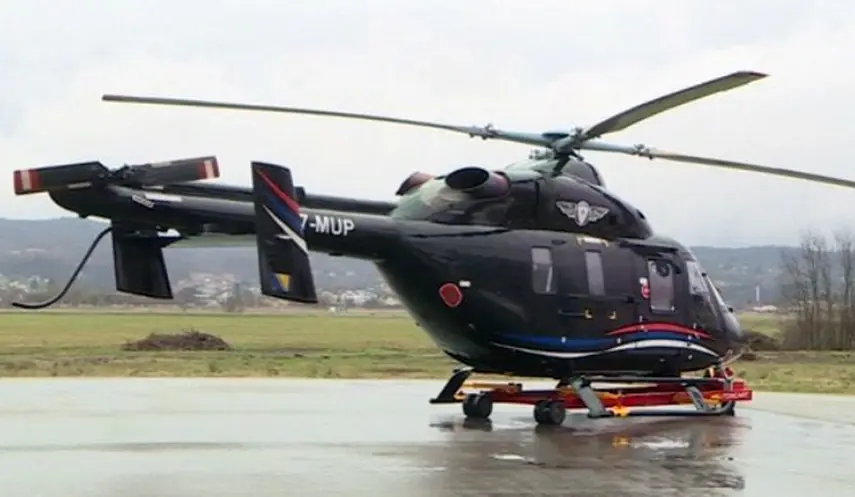CRIMINALS "DEFENDED" SARAJEVO FROM MEMBERS OF THE JNA; EPILOGUE OF THE EVENTS OF MAY 2, 1992 - 18 SOLDIERS WERE KILLED, THEIR BODIES WERE BURNED WITH ELECTRIC CABLES
FBiH - Sarajevo - Dobrovoljačka Street /6/
05/29/2025
09:51

EAST SARAJEVO, MAY 28 /SRNA/ - Based on witness statements and photographs from the crime scene at Skenderija in Sarajevo, Muslim extremists, Sarajevo criminals, were not satisfied with killing members of the 65th Protection Motorized Regiment of the Yugoslav People's Army /JNA/, but also burned their bodies with electrical cables that they tore off with a truck from nearby tram and trolleybus lines that operated on that route.
Unable to offer any kind of serious resistance, 11 members of the JNA were killed near the Skenderija plateau: Captain Marko Labudović, Lieutenants Obrad Gvozdenović, Ivica Cvetković and Mihad Kastrati, as well as soldiers Branko Popović, Kruno Bešlić, Mladen Nikolić, Radoš Pajović, Aleksandar Blagojević, Srđan Nikolić and driver Nebojša Bojanić.
Aleksandar Gluhović was also killed near Skenderija, as he headed from the Slaviša Vajner Čiča Barracks towards the JNA Home to help the wounded and captured.
The wounded were Mihajlo Babović, Dragan Glamočić, Dragan Lazukič, Dragan Matić, Dragoslav Nikolić and Milan Pejić, according to the "Atlas of War Crimes against Serbs" published by the Republic Center for Research on War, War Crimes and the Search for Missing Persons.
While the Muslim thugs were killing JNA members at Skenderija, they were simultaneously intensifying their attacks on the 2nd Military District Command building. Since the early morning of May 2, 1992, the personnel and the army have been in a total blockade and are suffering fierce fire from units of the "Patriotic League," the so-called Territorial Defense, the "Green Berets" and the Special Units of the BiH Ministry of Interior.
The high-intensity attacks lasted until 10:00 p.m., and there was sporadic shooting throughout the night. In an attempt to save his life from an attack by Sarajevo criminals led by Jusuf Juko Prazina at the gate of the Command building, soldier Perica Nović was killed.
A young man from the Prnjavor area was killed on the streets of Sarajevo by the same criminals who "repaid" him in this way for stopping them from looting and destroying city property just a month earlier.
Perica Nović received a written thank-you note from the civil authorities of Sarajevo for his personal contribution to preserving normal life in the city on Miljacka River.
In the moments when darkness covered Sarajevo on the second day of May 1992, the lifeless bodies of Goran Divović and Perica Nović lay in the Command building on Bistrik. A little further away, at the intersection near the new Skenderija Bridge, the bodies of members of the Saboteurs' Detachment of the 65th Protection Regiment were left scattered under the open sky, while the survivors awaited rescue in the premises of the Workers' University and the basement of a nearby skyscraper.
MUSLIMS INITIATED THE CONFLICT
The epilogue of the events of May 2, 1992 is that in the attacks on the JNA House, the building of the 2nd Military District Command, and in the ambushes on the groups of Lieutenant Colonel Milan Šuput and Captain Marko Labudović at Skenderija, a total of 18 people were killed, while a large number of them were seriously wounded. All of them died while resisting paramilitary formations and forces of the BiH Ministry of Interior.
Based on all of the above, it is clear that the Muslim side provoked the conflict by attacking the JNA House. The groups of Lieutenant Colonel Milan Šuput and Captain Marko Labudović had orders from their superior command to extract the wounded from the JNA House and transport them to the Military Hospital, and to rescue the remaining personnel from the surrounding area.
Although the Bosniak side has been promoting the narrative for years that "Niš special forces" attacked the BiH Presidency building in order to carry out a coup d'état, it is clear as day that this is simply not true.
There were no "Niš special forces" in Sarajevo, nor was there a "Yugoslav Army". The soldiers who were killed on May 2, 1992, were members of the Sarajevo Military District of the JNA. They were originally from Han Pijesak, Požarevac, Zvornik, Belgrade, Zavidovići, Prnjavor, Kakanj, and even Sarajevo, and they swore an oath to defend the common state.
If the JNA's goal had been to seize the BiH Presidency building and cut Sarajevo in two and thus carry out a coup d'état, then they would not have been displacing resources and equipment from Sarajevo for days and remaining completely "naked" in the midst of the enemy - Sarajevo criminals. Especially would it not have tried to take Sarajevo with two groups of almost 70 people?
It is quite unclear who tried to take the Presidency building!? Captain Labudović's unit passed the Presidency building on its way from the Military Hospital to the JNA House and was intercepted in the immediate vicinity of the new bridge at Skenderija.
On the other hand, Lieutenant Colonel Milan Šuput's group crossed the Miljacka at the new bridge at Skenderija and turned right towards the JNA House when it was attacked near the Đuro Đaković Workers' University.
Evidently, both groups had directions of movement opposite to the position of the Presidency building. The surviving members of these crews explicitly reject the allegations that they had orders to take the BiH Presidency building or some other institution that day.
There is no material evidence that JNA soldiers died in the fighting while trying to seize vital facilities in Sarajevo, as claimed by Muslim officials and the media they controlled, through which they cried out for alleged help, because, as they said, "the city was under attack by an aggressor army." /to be continued/

TREBEVIĆ NATURE PARK - OASIS OF HEALTH, PARADISE FOR TOURISTS

VELJANOVSKI: RECORD REVENUE OF OVER BAM 170 MILLION

HAPPY NEW YEAR!



